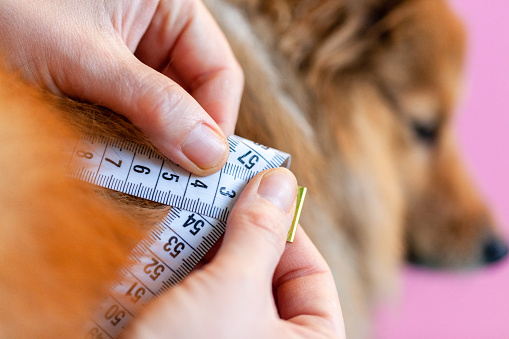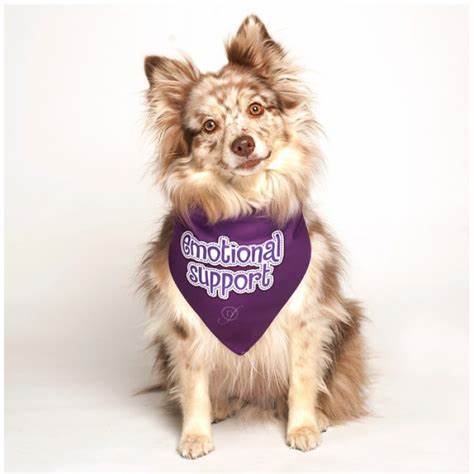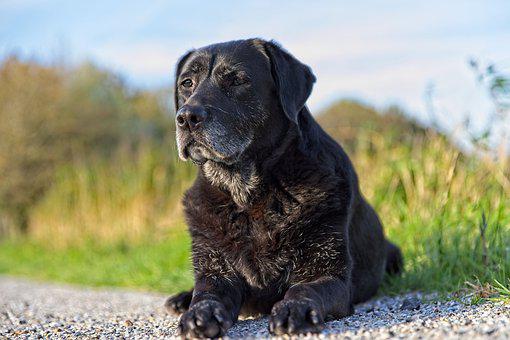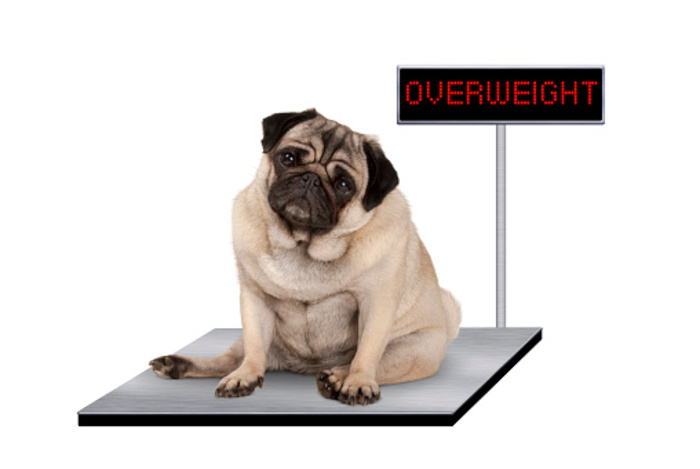
Giving our beloved paw friends plenty of treats to express our love and motivate them to perform wanted behaviors, provides a positive experience for both the owner and the dog. Our dogs start trusting us more, as they pair our presence with something pleasant, which strengthens our bond. However, some owners tend to go too far with this otherwise pleasant activity, and may cause their dogs to gain weight. Since being overweight may have a negative impact on the general health condition of our canines, we should be very careful with the amount and quality of the food we provide our dogs with.
Whether our dog is overweight or not, how to determine that, and what steps we need to take afterward - these are some questions we would like to answer today.
How to Determine if Your Dog Is Overweight
Check Your Dog’s Ribs and Spine
The easiest way to tell if your dog has a healthy weight is by trying to locate his/her ribs and spine. If there is little fat, and both the ribs and the spine are quite visible, your dog might be underweight.
If the ribs and the spine are not visible at all, and you can not see the waist either (or it is slightly visible), your canine might be overweight.
If your canine’s spine and ribs are not visible, but you can feel them easily, also you can see the waistline, your dog is likely to have a healthy weight.
Weigh Your Dog at the Veterinarian Office
You can always consult a veterinarian about your pet’s ideal weight, based on his/her age and breed. Your vet is likely to have a scale at their office that you may want to use on a regular basis. That way you will keep track of your doggy’s weight. A general rule that may be applied to situations when you need to weight your dog, is the rule of 15%- if your canine’s weight exceeds the ideal weight (based on his/her size, breed and age) by 15% or more, he/she is considered obese; if his/her weight exceeds the ideal weight by 15% or less, he/she is likely to be overweight.
Weigh Your Dog at Home
Another thing you can do is to ask your vet about the ideal weight that your dog should have, pick him/her up very gently and step on the scale at home. Then you can step again (this time without your doggy) and just calculate the weight difference. That way you will be able to easily determine If your dog may need to lose or gain some weight.
Take a Look at Your Dog From One Side
If your canine’s waist looks like it is hanging down and his/her belly is the same level as his/her chest, it means that your canine may need to lose some pounds.
Does Your Dog Have Fat Sacks
Whether on their hips, between their legs or elsewhere on the body, the presence of fat sacks/pads indicates that your canine is not in a perfect shape, and you need to take action.
Why Do Dogs Gain Weight?
Unhealthy Diet
The first and most common reason for dogs to gain weight is the unhealthy diet their owners put them on. We all love our paw friends and try to provide them with the best possible living conditions. However, sometimes we may not realize that our care actually affects them negatively.
We highly recommend that you keep track of the amount of food your dog eats on a daily basis-divide the portions throughout the day and make sure that the food is not too high in fat. Also, you should pay attention to the ingredients and the additives that may be included, and avoid brands using coloration, too much salt, and any additives considered unhealthy for your dog. According to researchers dogs who regularly eat kibble tend to gain weight much more than canines who eat fresh food.
If you train your dog and use treats as a primary motivator, or you just love to give him/her treats because this is your doggy (he/she is the best dog in the world after all), pay attention to their amount. You should not exceed the limit perceived acceptable and healthy treats should not exceed 10% of the total calories intake per day.
Lack of Activities
An important part of the process of raising and training a dog is taking care of their physical health by investing time to walk them, play with them, exercise them and train them. Lack of activity is one of the main reasons for dogs to gain weight. Always keep in mind that some breeds have higher energy levels and thus need more exercise. If you are at the point when you consider getting a pup, take a look at the breed’s characteristics and energy level before making a decision. Although it is all relative and depends on the dog as an individual, this information will give you a general idea of what you should expect. Breeds such as the:
Australian Shepherd, Jack Russell Terrier, Border Collie, German Shepherd, Australian Cattle Dog, Siberian Husky, the Golden Retriever...etc., are considered highly energetic. If they do not receive enough exercises, they may not only gain weight but also develop bad habits like barking, chewing, jumping on people, pulling on a leash...etc.
Age
Age is another factor that may affect your dog’s weight. It is known, that dogs at the age of 6-10 years (middle age) are more prone to overweight, compared to their younger and older counterparts. That is why you may want to consult a veterinarian about the food that is most suitable for your paw friend, based on his/her age. As you may know, puppy’s food is higher in fat and protein as puppies nutritional intake should support their growth. Adult dogs, especially those who have been spayed/neutered, do not need the same amount of fat.
Mental Condition
Events, perceived by your dog as stressful, may worsen his/her health and cause weight gain. Examples of such events may be:
-An abrupt change in the environment such as moving to a new home or re-arranging the furniture;
-A family member passed away or left the home;
-Change of the daily routine (dogs love routine and any sudden and drastic changes may affect them negatively);
-You welcomed a baby or brought a new pet;
-A stressful trigger in the environment- a person, sounds, an object...etc.
Regardless of the particular reason, anxiety and stress in our paw friends may have physical signs as well and weight gain could be one of them.
Underlying Health Issue
If you follow all the “rules” for raising a dog such as providing him/her with healthy food, exercising him/her, playing with him/her, training him/her, ensuring that he/she has a safe and healthy environment in general, but your paw friend can not lose weight, you may need to book an appointment at the vet office. Regular veterinarian checks should not be neglected so that eventual health issues can be determined in a timely manner.
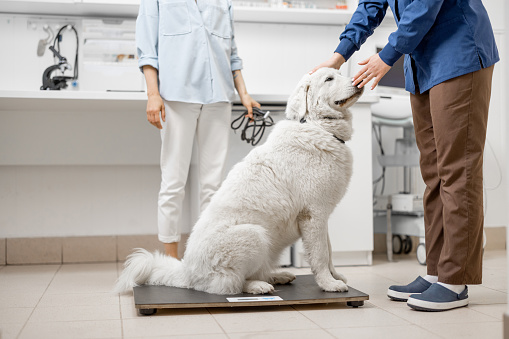
Health Conditions that Overweight May Cause
If you think that some extra pounds make your cute doggy look even cuter, you should think again about his/her health. Overweight may cause serious health problems including:
Hearth problems, Diabetes, Kidney Disease, Cancer (certain types), Liver Disease, Joint Problems, High Blood Pressure, Breathing Issues.
Tips On What to Do if Your Dog Needs to Lose Weight
Healthy Diet
Feed with your dog with quality food. As mentioned above-you should consider the age, breed, size and general health condition of your canine to make sure that the food he/she takes is the most suitable one for him/her.
Feed your dog at least twice a day and in case he/she is still hungry, actively searching for food, you can add healthy supplements to his/her food, such as vegetables. Please be careful when giving your dog human food-always consult a veterinarian first and make sure that the food has been properly prepared and is not raw. Some food that is safe for us, may cause serious problems and even death in dogs.
Treats
Keep track of the amount of treats you give your dog on a daily basis. The more you know your dog, the better you will be able to determine when he/she is actually hungry or just greedy.
Do Not Fall for Begging
It would be helpful if you learn how to prevent your canine from begging for food and be able to redirect his/her attention. Always reward him/her when he/she behaves well. If your dog tends to exhibit behaviors like whining, barking, and scratching, ...when he/she wants food or seeks your attention, you may need to conduct basic obedience training and reinforce only the wanted behaviors.
Smooth Transition
Whether it comes to food change or an environmental change, it should be conducted gradually. If you are in the process of changing food brands / moving from food, that is higher in fat to food lower in fat or vice versa, it should happen step by step. The amount of the new food should increase by 10% on a daily basis and gradually replace the old one, until it becomes 100% of the food content.
Smooth transition is also valid for exercises. If your dog is not in a good shape, do not exercise him/her a lot from the first day. It is important that you keep the training/exercising sessions short and frequent. Also, you can consult your veterinarian in regard to the intensity and frequency of the exercises considered healthy for your paw friend.
Exercises
As stated above, physical and mental stimulation is really important for the general well-being of our paw friends. Invest time in playing/training sessions, walks, exercises that will keep your dog engaged and fit.
Regular Veterinarian Checks
Do not skip annual/monthly vet checks (based on your dog’s age) as they will provide you with important information about the general health condition of your paw friend.
How Long Until You Have Visible Results
A weight loss of 1-2% on a weekly basis is considered the ideal case. It is essential that you remain consistent and patient and once your dog loses the extra pounds, to keep sticking to the healthy diet and lifestyle. Invest more time in activities, healthy food and interaction with your dog. You will not only help them stay fit, but you will strengthen your bond.
Happy dogs, with whom we have a strong bond-this is all we want after all...

